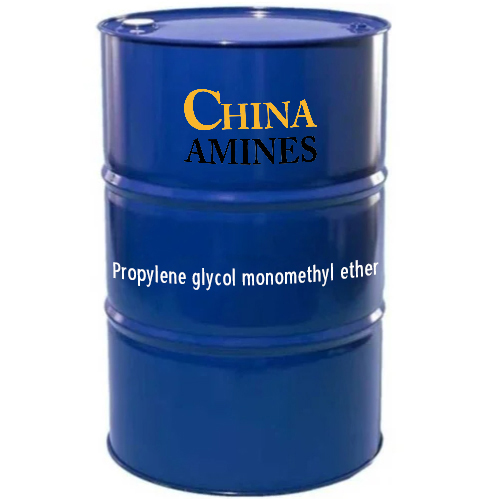1. Chemical Structure and Properties
Molecular Formula: C₄H₁₀O₂
Structural Formula: CH₃OCH₂CH(OH)CH₃ — a branched glycol ether consisting of a propylene glycol backbone with a methyl ether group and a hydroxyl group.
Physical Properties: Appearance: Clear, colorless liquid with a mild ether-like odor; Boiling Point: 120–125°C; Density: 0.92–0.94 g/cm³; Vapor Pressure: ~3 mmHg at 25°C; Solubility: Miscible with water, alcohols, and most organic solvents (e.g., acetone, ethyl acetate).
Chemical Properties: Hydrophilic-Lipophilic Balance (HLB): ~5.0; Hydrolysis Resistance: Stable under neutral and mildly acidic/alkaline conditions; Flammability: Combustible (flash point: ~32°C).
2. Industrial Applications
Coatings & Inks: Coalescing agent in waterborne paints and latex adhesives; Solvent for UV-curable inks and epoxy resin formulations.
Electronics Manufacturing: Photoresist developer in semiconductor lithography; Flux remover for printed circuit boards.
Pharmaceuticals: Reaction medium for synthesizing heat-sensitive active pharmaceutical ingredients (APIs).
Cleaning Products: Industrial degreaser effective against oils, greases, and silicone-based contaminants.
3. Safety and Toxicology
Acute Exposure: Skin Contact: Mild irritation (rabbit skin LD₅₀ > 2,000 mg/kg); Inhalation: Respiratory irritation at ≥100 ppm (TLV-TWA: 50 ppm); Ingestion: Low acute toxicity (oral LD₅₀ rat: 3,500 mg/kg).
Chronic Effects: No teratogenicity observed in OECD 414 studies; Limited evidence of neurotoxicity at high doses.
Protection Measures: PPE: Nitrile gloves, safety goggles, local exhaust ventilation; Storage: Fireproof containers in cool, ventilated areas away from oxidizers.
4. Environmental and Regulatory Compliance
Aquatic Toxicity: LC₅₀ (fish, 96 h): > 100 mg/L; EC₅₀ (daphnia): > 50 mg/L.
Biodegradability: Readily biodegradable (OECD 301F: > 60% in 28 days); Low bioaccumulation potential (log Kow: 0.5).
Regulatory Frameworks:
EU: REACH-registered, Not classified as hazardous under CLP.
USA: Exempt from VOC regulations (40 CFR 51.100(s)(1)); TSCA-listed.
China: GB 13690-2009: Classified as General Chemical (non-hazardous).
Waste Management: Incineration with energy recovery; wastewater treatment via activated sludge.
5. Case Studies and Application Insights
Case 1: Green Adhesive Production (3M, 2023): Replaced ethylene glycol ethers in medical-grade adhesives with PGME formulations, achieving 99% VOC reduction while maintaining bond strength and MDR compliance.
Case 2: Semiconductor Cleaning Efficiency (TSMC, 2022): Substituted NMP with PGME in post-etch wafer cleaning, resulting in 25% faster cycles and 50% lower solvent waste.
Comparative Analysis: PGME vs. Ethylene Glycol Monomethyl Ether (EGME):
Pros: Lower toxicity, better biodegradability, reduced regulatory restrictions.
Cons: Higher viscosity (5 mPa·s vs. 1.7 mPa·s) limits use in low-viscosity applications.
Specifications:
Propylene Glycol Monomethyl Ether (PGME) is a highly effective solvent with excellent miscibility, low evaporation rate, and versatile use in coatings, cleaning products, and industrial applications, available from China Amines Co.


